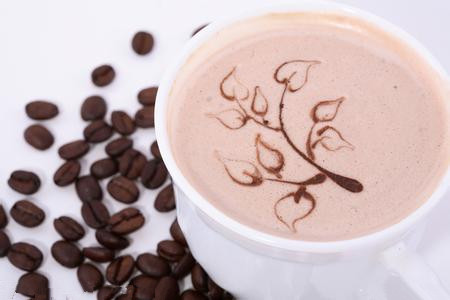The Origin and Culture of Bali Coffee

When I came to Bali to buy a lot of things, I will write about them one by one. The first thing worth mentioning is the coffee in Bali. Generally speaking, Indonesia coffee has the taste of earth and traditional Chinese medicine, and its consistency is among the highest in all continents. We went to the Golden Rabbit Gold Coffee Factory near Kimbalan, which was the big sign we saw when we first entered the door.
Then someone specially introduced us to the origin of coffee and the knowledge of coffee. Let me first talk about the origin of Kopi Luwak.
There are dense coffee trees growing on the Indonesian island of Sumatra. For hundreds of years, the residents of the island have made a living by collecting coffee beans. But in recent years, whenever the coffee is about to ripen, the troubles of the islanders also come. This is because a kind of animal called palm cat began to live and breed on the island. Palm cats like to eat coffee fruits, and they are better at climbing trees than humans, often before people start picking, the most ripe and reddest coffee fruits have become a good meal for these palm cats.
As a result of the competition for palm cats, the coffee resources available to the islanders have been greatly reduced. For this reason, the islanders hated this competitor so much that they began to drive away palm cats during the coffee ripening season, and then began to attack and kill them. People want to ensure the harvest of coffee by wiping out palm cats. Hunger and killing led to the death of a large number of palm cats, and people finally achieved the goal of monopolizing coffee.
Coffee fruit grows on tall coffee trees. People have to climb trees when picking coffee, so it's a very hard work. One day, a lazy man who didn't want to climb a tree suddenly found that there were always a lot of undigested coffee beans in the droppings of those palm cats who stepped on their feet. It turns out that palm cats only like to eat sweet coffee fruit, but the coffee beans in the fruit are excreted because they are indigestible. So the man secretly collected the coffee beans excreted by the palm cat. He took it back as collected coffee beans and sold them to a coffee merchant.
Unexpectedly, the businessman had a deep study of coffee, and when he smelled the smell of these coffees, he immediately felt that they were extraordinary. When he tasted the coffee, he was even more surprised, because it was not only as thick as syrup, but also as thick as chocolate. it was so mellow and smooth that he had never tasted such wonderful coffee.
He put down the cup, immediately found the coffee seller and asked where the coffee came from. So the man had to tell the origin of the coffee beans. After hearing this, the coffee merchant sighed the god of creation and thought that the method of fermenting coffee could only ferment ordinary coffee, while the digestive system of palm cats actually produced a special fermentation process for coffee, transforming the originally ordinary coffee beans into a unique artifact in the world. After sighing, he began to pay a high price for this palm cat coffee from the islanders.
It was not until then that the islanders were no longer enemies of palm cats. They carry baskets, struggling to find palm cat droppings, and every day, their best hope is to have a large number of palm cats to eat coffee fruits, and then excrete more attractive palm cat coffee beans. Because a pound of Palm Cat Coffee can be sold for $300, its price far exceeds that of famous brands such as Blue Mountain and Kona, making it truly the most expensive coffee in the world.
But the funny thing is that because of the indiscriminate killing of the islanders, there are not many palm cats on the island, and the number of palm cats restricts the production of palm cat coffee, which people regret. The story of Palm Cat Coffee tells people that we should always cherish a kind of fraternity and friendliness, remember to give every "coffee" of our lives to others, and when we leave opportunities for others, we plant hope for ourselves.
After talking about the origin of Kopi Luwak, let's talk about the Golden Rabbit Coffee I bought. Making Golden Rabbit Coffee is also very fastidious. It is said that Indonesia's Mantenin and Java coffee are famous all over the world, and many people do not know that Bali itself also produces coffee. Coffee trees in Bali mostly grow in the high mountains of the north-central region at an altitude of 1000-2000 meters. Because the area is cool and foggy, it is suitable for coffee trees to grow. As a result, Bali's "golden coffee" arises at the historic moment, with an average annual output of 8000 tons.
At a Chinese-owned Golden Rabbit Gold Coffee Factory in Nusa Dua, the young owner says that Balinese coffee tastes neither sour nor astringent, but rather bitter, and can ripen once or twice a year, around the end of September and March. During the ripening season, the coffee is harvested manually, and then dried, screened and roasted.
It is understood that the picked coffee fruit needs to be exposed to the sun for about two weeks, and then manual screening is carried out. Workers will screen out coffee beans that are brown, cyan, moth and stinky, so as to avoid the sour smell of the coffee. This is followed by baking, which is usually roasted at 350 degrees for an hour and a half, then placed indoors to dissipate heat, and then the beans can be packaged or ground into coffee powder for sale.
The boss said that it is best to leave the freshly ground coffee powder for 2 days and then brew it after the chemical change between the coffee powder and the air.
Bali's "Golden Coffee" is fine ground coffee, which makes more coffee grounds, such as Middle Eastern coffee. People who don't like too much coffee residue had better use fine filter paper to filter it.
Balinese coffee has a bitter taste in the throat, and its taste is quite smooth and memorable. Infatuated men and women who like coffee might as well buy a few bags of freshly roasted and ground coffee to enjoy at home when they come to Bali. The price of a bag of 500 grams is about NT $250, and there are many decorations made of coffee beans and coffee powder, which are quite fresh. For those who like coffee, you might as well try it!
Important Notice :
前街咖啡 FrontStreet Coffee has moved to new addredd:
FrontStreet Coffee Address: 315,Donghua East Road,GuangZhou
Tel:020 38364473
- Prev

Coffee beans are also divided into "aristocratic and poor classes". Evaluation of the quality of coffee
Coffee quality Evaluation Coffee producing countries have their own grading methods and quality evaluation standards in order to grade their harvested coffee, of course, there are also famous coffee mochas. Like Yemen in Matali, there are no countries with uniform export specifications and no coffee culture of the same style. If there are common evaluation criteria for coffee producers all over the world, it will be convenient for buyers.
- Next

Let you know the difference between several common coffees as quickly as possible.
Espresso, macchiato, Campbell, cappuccino, latte, mocha! If you have a scale map, you can Diy it at home, of course, if you have a coffee maker.
Related
- Detailed explanation of Jadeite planting Land in Panamanian Jadeite Manor introduction to the grading system of Jadeite competitive bidding, Red bid, Green bid and Rose Summer
- Story of Coffee planting in Brenka region of Costa Rica Stonehenge Manor anaerobic heavy honey treatment of flavor mouth
- What's on the barrel of Blue Mountain Coffee beans?
- Can American coffee also pull flowers? How to use hot American style to pull out a good-looking pattern?
- Can you make a cold extract with coffee beans? What is the right proportion for cold-extracted coffee formula?
- Indonesian PWN Gold Mandrine Coffee Origin Features Flavor How to Chong? Mandolin coffee is American.
- A brief introduction to the flavor characteristics of Brazilian yellow bourbon coffee beans
- What is the effect of different water quality on the flavor of cold-extracted coffee? What kind of water is best for brewing coffee?
- Why do you think of Rose Summer whenever you mention Panamanian coffee?
- Introduction to the characteristics of authentic blue mountain coffee bean producing areas? What is the CIB Coffee Authority in Jamaica?

